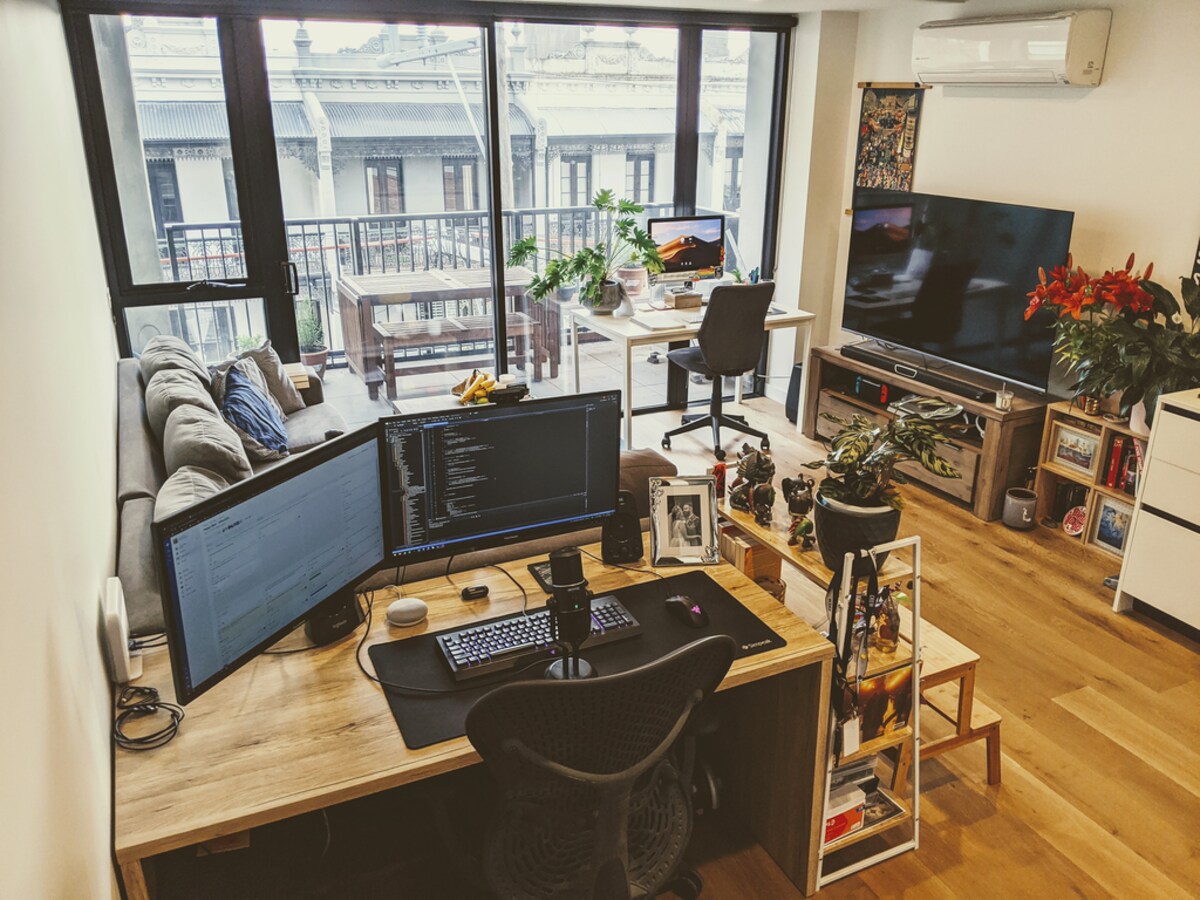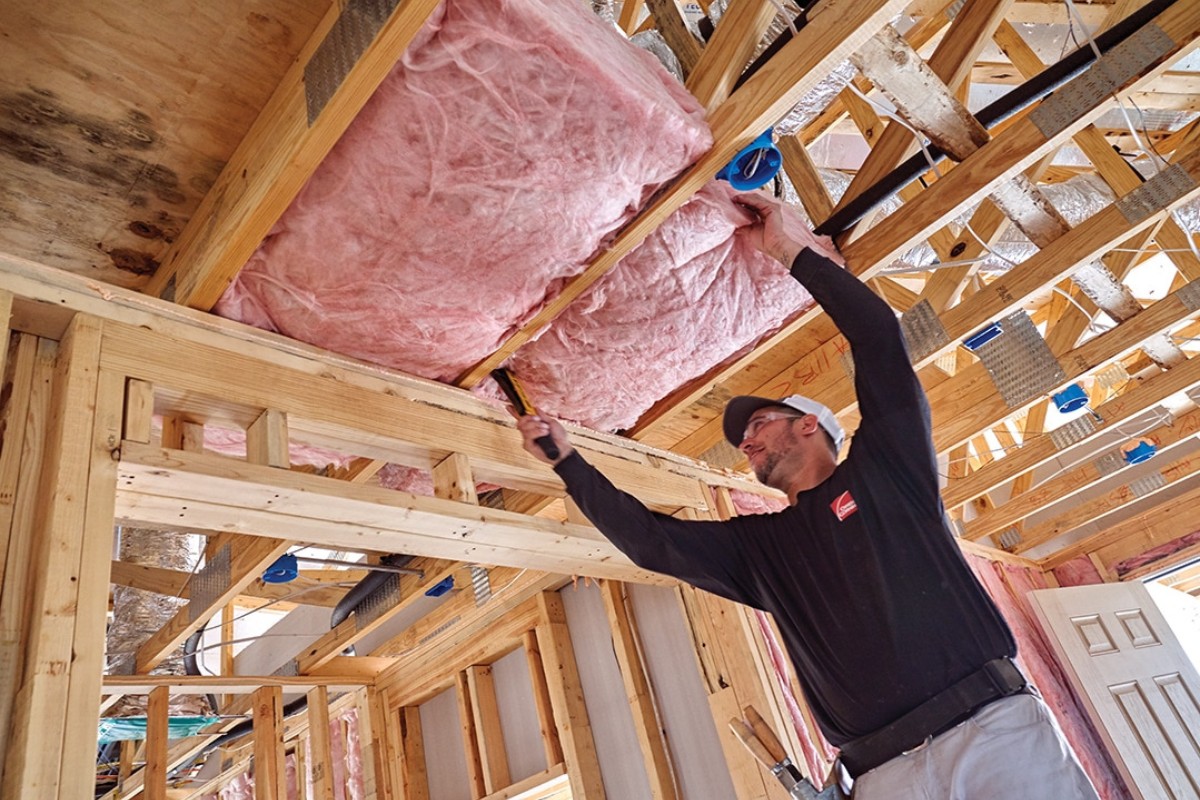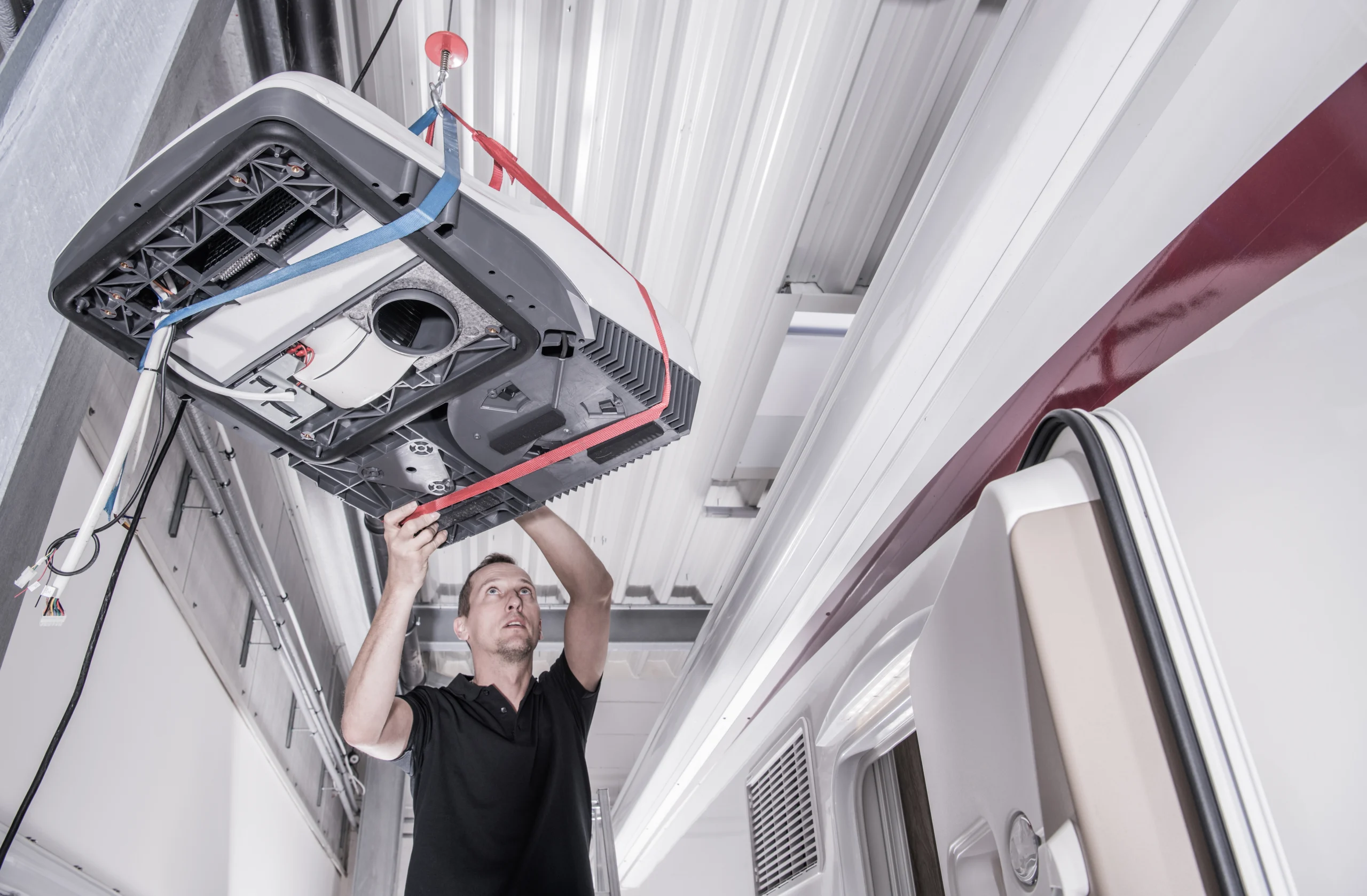Home>Health & Lifestyle>Family & Pet-Friendly Home Design>Why Does Work Spillover To Home Life


Family & Pet-Friendly Home Design
Why Does Work Spillover To Home Life
Published: December 22, 2023
Discover the impact of family-and-pet-friendly home design on work-life balance and learn why work spillover affects home life. Explore effective strategies for creating a harmonious living environment.
(Many of the links in this article redirect to a specific reviewed product. Your purchase of these products through affiliate links helps to generate commission for Storables.com, at no extra cost. Learn more)
Introduction
The Intersection of Work and Home Life
As our lives become increasingly intertwined with technology and remote work, the boundaries between professional and personal spheres have become more porous. This shift has led to a phenomenon known as “work spillover,” where the demands and stressors of work infiltrate our home lives, impacting our well-being and relationships. Understanding the causes and consequences of work spillover is essential for creating a harmonious and balanced living environment. In this article, we will explore the multifaceted nature of work spillover, its impact on family dynamics, and effective strategies for mitigating its effects.
Work spillover occurs when the pressures and responsibilities associated with work extend beyond the confines of the traditional office setting, seeping into our homes and personal time. This can manifest in various forms, such as checking work emails during family dinners, feeling compelled to work during off-hours, or experiencing heightened stress and anxiety related to job demands. The repercussions of work spillover are far-reaching, affecting not only the individuals directly involved but also their families and overall household dynamics.
By delving into the factors contributing to work spillover, including the role of technology and evolving work culture, we can gain valuable insights into how to address this pervasive issue. Moreover, by identifying effective strategies for managing work spillover, individuals and families can cultivate a more nurturing and supportive home environment, fostering greater work-life balance and overall well-being.
Join us on this exploration of the intricate relationship between work and home life, as we uncover the challenges posed by work spillover and illuminate the path towards a more harmonious and fulfilling domestic experience.
Key Takeaways:
- Work spillover from the office to home can strain family relationships, disrupt household responsibilities, and impact children’s well-being, highlighting the need for clear boundaries and open communication to restore harmony.
- Technology blurs the lines between work and home, but mindful disconnection, designated work-free zones, and effective time management can help families navigate work spillover and create a nurturing domestic environment.
The Impact of Work on Home Life
Work spillover exerts a profound influence on the dynamics of home life, shaping the quality of relationships, the division of household responsibilities, and the overall well-being of family members. The repercussions of work spillover can permeate every aspect of domestic life, creating both subtle tensions and overt conflicts. Understanding the multifaceted impact of work spillover is essential for devising effective strategies to mitigate its effects and restore balance to the home environment.
Strained Relationships: Work spillover can strain relationships within the family unit, leading to decreased communication, emotional distance, and a sense of disconnection. When individuals bring work-related stress and preoccupations into the home, it can hinder their ability to fully engage with their loved ones, resulting in diminished intimacy and mutual support. Over time, this strain can erode the foundation of familial bonds, impacting the overall harmony and cohesion of the household.
Imbalance in Household Responsibilities: Work spillover often disrupts the equitable distribution of household responsibilities, as individuals find it challenging to disengage from work-related tasks and fully participate in domestic chores and caregiving duties. This can lead to feelings of resentment and frustration, particularly if one partner feels burdened by an unequal share of household work. Addressing this imbalance is crucial for fostering a sense of fairness and cooperation within the family.
Impact on Children and Parenting: The effects of work spillover extend to children, influencing the quality of parental involvement and the emotional climate of the home. When parents are preoccupied with work demands, they may have less time and energy to engage with their children, participate in meaningful activities, or provide the necessary emotional support. This can contribute to feelings of neglect or insecurity among children, impacting their overall well-being and development.
Emotional Well-being: Work spillover can take a toll on the emotional well-being of individuals, leading to heightened stress, anxiety, and a pervasive sense of being constantly “on call” for work-related matters. This emotional burden can permeate the home environment, creating an atmosphere of tension and unease. Moreover, prolonged exposure to work spillover can contribute to burnout and mental fatigue, further exacerbating the challenges of maintaining a healthy work-life balance.
By recognizing the intricate ways in which work spillover influences home life, individuals and families can proactively address these challenges and implement strategies to foster a more supportive and nurturing domestic environment. In the following sections, we will delve into the factors contributing to work spillover and explore effective approaches for managing its impact on family dynamics.
Factors Contributing to Work Spillover
Work spillover is influenced by a myriad of interconnected factors, encompassing both individual behaviors and broader societal trends. Understanding these contributing factors is essential for devising targeted interventions to mitigate the pervasive impact of work-related stressors on home life. By examining the intricate web of influences that contribute to work spillover, individuals and families can gain valuable insights into how to navigate these challenges and foster a more balanced and harmonious living environment.
Blurring of Boundaries: In today’s digitally connected world, the boundaries between work and personal life have become increasingly blurred. The pervasive use of smartphones, laptops, and other devices means that individuals are often accessible to their work obligations around the clock. This constant connectivity can make it challenging to establish clear demarcations between work hours and leisure time, leading to a seamless integration of work-related tasks into the home environment.
Culture of Overwork: Many workplaces perpetuate a culture of overwork, where long hours and excessive dedication to job responsibilities are valorized. This cultural norm can create pressure for employees to demonstrate unwavering commitment to their roles, often at the expense of their personal well-being and family life. The normalization of overtime and the expectation of immediate responsiveness contribute to the encroachment of work into the home domain.
Remote Work and Flexibility: While remote work offers unparalleled flexibility and autonomy, it also introduces unique challenges related to work-life boundaries. Working from home blurs the physical separation between the professional workspace and the domestic environment, making it easier for work demands to permeate the home setting. The absence of a clear commute or physical transition from work to home can exacerbate the spillover effect, as individuals find it challenging to mentally disengage from their professional responsibilities.
Technological Intrusion: The pervasive presence of technology in our daily lives has revolutionized the way we work, communicate, and unwind. However, this technological integration also facilitates the infiltration of work-related communications and tasks into our personal time. The constant influx of work emails, notifications, and virtual meetings can impede individuals’ ability to fully disconnect from work, perpetuating the cycle of work spillover.
Personal Boundary Management: Individuals’ own boundary management practices, including their ability to set clear limits on work-related activities and prioritize personal time, play a pivotal role in determining the extent of work spillover. Factors such as assertiveness in asserting boundaries, time management skills, and the ability to delegate or compartmentalize work tasks can influence the permeability of work-life boundaries.
By elucidating the complex interplay of these factors, we can gain a deeper understanding of the mechanisms driving work spillover and the challenges it poses to family dynamics. In the subsequent section, we will explore the role of technology in shaping work spillover and its implications for home life.
The Role of Technology
Technology plays a pivotal role in shaping the landscape of work spillover, exerting a profound influence on the permeability of work-life boundaries and the integration of professional demands into the home environment. The seamless connectivity afforded by digital tools and communication platforms has revolutionized the nature of work, offering unprecedented flexibility while blurring the distinctions between professional and personal spheres. Understanding the impact of technology on work spillover is essential for devising effective strategies to mitigate its effects and restore balance to the home environment.
Constant Connectivity: The ubiquitous presence of smartphones, laptops, and other digital devices has facilitated constant connectivity to work-related communications and tasks. While this connectivity offers unparalleled flexibility and accessibility, it also engenders a state of perpetual availability, making it challenging for individuals to disengage from work obligations during non-business hours. The expectation of immediate responsiveness perpetuates the intrusion of work into personal time, contributing to the phenomenon of work spillover.
Virtual Collaboration Tools: The proliferation of virtual collaboration tools, such as video conferencing platforms, project management software, and instant messaging applications, has redefined the nature of professional interactions. While these tools enhance productivity and enable seamless communication, they also extend the reach of work into the home environment. The seamless transition between virtual meetings and personal space blurs the delineation between work and leisure, fostering an environment conducive to work spillover.
Email and Digital Communication: The prevalence of work-related emails and digital communication channels has transformed the nature of professional correspondence, enabling rapid exchanges and real-time collaboration. However, the constant influx of work emails and notifications can encroach upon personal time, impeding individuals’ ability to fully disconnect from work-related matters. The compulsion to stay attuned to digital communication channels perpetuates the permeation of work into the home domain, contributing to the challenges of work spillover.
Boundary Blurring in Remote Work: Remote work arrangements, facilitated by technological advancements, have blurred the boundaries between the professional workspace and the domestic environment. The absence of a physical commute or delineated workspace makes it challenging for individuals to mentally transition between work and home, exacerbating the spillover effect. The seamless integration of work tasks into the home setting, facilitated by technology, contributes to the pervasiveness of work-related stressors in the domestic sphere.
Technological Solutions and Boundaries: While technology contributes to work spillover, it also offers potential solutions for managing its impact. Utilizing features such as “do not disturb” settings, designated workspaces, and time management applications can help individuals establish clearer boundaries between work and personal time. Moreover, leveraging technology to streamline work processes and enhance efficiency can create opportunities for greater work-life balance and reduced spillover effects.
By acknowledging the intricate interplay between technology and work spillover, individuals and families can adopt proactive measures to mitigate the impact of constant connectivity and technological intrusion on home life. In the subsequent section, we will explore effective strategies for managing work spillover and fostering a more harmonious domestic environment.
Set clear boundaries between work and home life by creating a designated workspace, setting specific work hours, and taking regular breaks to recharge. This can help reduce work spillover and improve overall well-being.
Strategies for Managing Work Spillover
Effectively managing work spillover requires a proactive and multifaceted approach that addresses the underlying causes of permeable work-life boundaries while fostering a supportive and balanced home environment. By implementing targeted strategies and cultivating mindful practices, individuals and families can mitigate the impact of work-related stressors on home life, promoting greater harmony and well-being. The following strategies offer actionable steps for navigating the challenges posed by work spillover and creating a more nurturing domestic experience.
Establish Clear Boundaries: Setting clear boundaries between work and personal time is essential for mitigating work spillover. Designating specific hours for work-related tasks and delineating distinct spaces for professional activities can help create a sense of separation between professional and personal spheres. Communicating these boundaries to colleagues and family members fosters mutual understanding and respect for designated periods of uninterrupted personal time.
Embrace Mindful Disconnection: Cultivating mindful disconnection from work-related digital devices and communication channels is crucial for restoring balance to the home environment. Implementing designated “unplugged” periods, such as during family meals or recreational activities, allows individuals to fully engage with their loved ones and recharge without the intrusion of work-related distractions. Prioritizing present-moment experiences and meaningful interactions fosters a sense of emotional presence and connection within the family.
Designate Work-Free Zones: Creating designated work-free zones within the home, such as the dining area or communal living spaces, establishes physical boundaries that signal the demarcation between work and leisure. Encouraging family members to respect these designated areas as spaces for relaxation and social interaction reinforces the importance of maintaining a harmonious domestic environment free from work-related stressors.
Practice Effective Time Management: Developing effective time management skills is instrumental in mitigating the impact of work spillover. Prioritizing tasks, setting realistic goals, and establishing structured routines can enhance productivity during designated work hours, allowing for more focused and efficient completion of professional responsibilities. By optimizing work efficiency, individuals can create opportunities for greater work-life balance and reduced spillover effects.
Foster Open Communication: Open and transparent communication within the family unit is essential for addressing the challenges posed by work spillover. Encouraging dialogue about individual stressors, sharing feelings of overwhelm, and collaboratively devising strategies for managing work-related demands fosters a supportive and empathetic familial environment. By openly acknowledging the impact of work on home life, families can work together to implement meaningful changes that promote well-being.
Cultivate Rituals and Traditions: Establishing meaningful rituals and traditions within the family, such as regular family meals, outdoor activities, or shared hobbies, creates opportunities for bonding and emotional connection. These rituals serve as anchors of stability and joy, offering moments of respite from work-related pressures and fostering a sense of unity within the family.
By integrating these strategies into their daily lives, individuals and families can navigate the challenges of work spillover and cultivate a more resilient and harmonious home environment. In the final section, we will reflect on the importance of addressing work spillover and the potential for creating a fulfilling domestic experience characterized by greater work-life balance.
Conclusion
Work spillover represents a pervasive and multifaceted challenge that influences the dynamics of home life, shaping the quality of relationships, the distribution of household responsibilities, and the overall well-being of family members. As the boundaries between work and personal spheres continue to blur in the digital age, it is essential to acknowledge the far-reaching impact of work-related stressors on the domestic environment and to implement targeted strategies for mitigating its effects.
By recognizing the intricate ways in which work spillover manifests in family dynamics, individuals and families can proactively address these challenges and create a more nurturing and supportive home environment. The strategies for managing work spillover outlined in this article offer actionable steps for establishing clear boundaries, embracing mindful disconnection, and fostering open communication within the family unit. Moreover, the role of technology in shaping work spillover underscores the need for mindful integration of digital tools and the cultivation of work-free zones within the home.
As we navigate the complexities of modern work culture and the pervasive influence of technology, it is imperative to prioritize the well-being of individuals and families, fostering a harmonious and balanced domestic experience. By fostering open communication, cultivating meaningful rituals, and practicing effective time management, individuals can navigate the challenges of work spillover and create a more resilient and fulfilling home environment.
Ultimately, addressing work spillover is not only a matter of individual well-being but also a collective endeavor that requires the active participation and support of family members. By fostering a culture of empathy, understanding, and mutual respect, families can navigate the challenges of work spillover and create a domestic environment characterized by greater work-life balance and emotional harmony.
As we strive to create a more harmonious intersection of work and home life, it is essential to recognize the value of fostering supportive and nurturing family dynamics, where the well-being of each member is prioritized and cherished. By implementing the strategies outlined in this article and fostering a culture of mindfulness and mutual support, individuals and families can navigate the challenges of work spillover and cultivate a resilient and fulfilling domestic experience.
Frequently Asked Questions about Why Does Work Spillover To Home Life
Was this page helpful?
At Storables.com, we guarantee accurate and reliable information. Our content, validated by Expert Board Contributors, is crafted following stringent Editorial Policies. We're committed to providing you with well-researched, expert-backed insights for all your informational needs.















0 thoughts on “Why Does Work Spillover To Home Life”